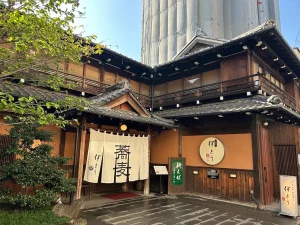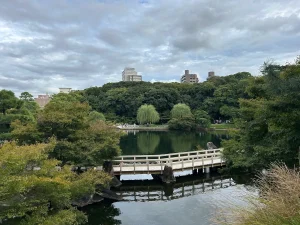When visiting temples or shrines in Japan, please remember that these are sacred places. Any behavior that shows disrespect — such as touching sacred objects, entering restricted areas, or making noise — can be seen as both culturally offensive and legally punishable under Japanese law (Article 188 of the Penal Code).
The Osu Shopping Street is popular among international visitors. It’s like a compact mix of Tokyo’s Asakusa, Akihabara, and Ueno. On the grounds of Osu Kannon, the iconic temple of this shopping district, an antique market is held on the 18th and 28th of every month. I visited the market, took plenty of photos, and would love to share them with everyone!
It was around noon on the 18th, a weekday, and the timing felt just right. All the vendors were set up, and there was a good crowd of people. Some vendors, I heard, start early in the morning and pack up around 2 PM.
It’s said that the number of vendors ranges from 70 to 80 each time. However, if the weather is bad, fewer vendors show up since their items might get wet. In cases of extremely bad weather, the market may even be canceled. Fortunately, the day I visited had perfect weather.
The items mainly include antique goods from Japan and other parts of Asia, such as Korea and China. You’ll find wooden carvings, swords, ironware, and pottery. There are affordable items starting at around 500 yen. Some items require asking the vendors directly about its price.
While some vendors are local to Nagoya, many seem to come from the Kansai region. Similar events are held in Kyoto and Osaka, so it seems these vendors travel around to participate. I noticed this because I heard more Kansai dialect than Nagoya dialect at the market.
In the top right corner, there’s a Chinese-style teacup and teapot. You can also see a toy Japanese sword and wooden kokeshi dolls.
A shop selling pottery and wooden crafts.
These appear to be rings. They’re relatively affordable, priced at around 2,000 yen.
These are wooden crafts and similar items. Since the prices aren’t displayed, you’ll need to ask the shop owner directly.
These are Buddhist altar items and related artifacts. Many of them are quite old.
This shop is one of the few that specializes in Western-style items. They primarily sell bags and similar goods.
These are said to be very old Korean ceramics. Purchasing items like these might be challenging unless you have a good eye for antiques.
Two impressive pieces of ironware.
This shop specializes in wooden carvings. They offer a variety of sizes and designs.
Pottery suitable for everyday use was also on sale. Shops like these were particularly popular with younger visitors.
There weren’t many clothing shops. This one sold vintage military-style apparel.






















LEAVE A REPLY